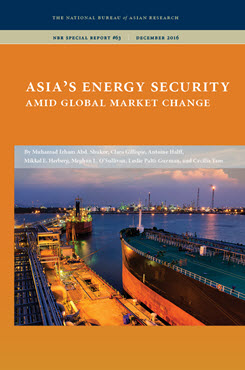The Outlook for Asia's Oil Market in a Lower-Price Environment
This essay examines the short- and longer-term impact of low oil prices on Asian countries and assesses risks to energy security.
EXECUTIVE SUMMARY
MAIN ARGUMENT
The collapse of oil prices that began in June 2014 is unprecedented in scope and duration and reflects deep structural changes in the oil industry as a result of the advent of shale oil and global shifts in oil consumption. As the world’s largest oil-importing region by far, and one in which the share of global oil demand is expected to grow even more in the next twenty years, Asia is uniquely affected by these developments. While lower oil prices have brought the region some benefits, this trend has been a mixed blessing and carries significant risk for the future. Low prices have stimulated oil demand but not economic growth, with the notable exception of India. The price decline has also slashed investment in future oil-production capacity and increased Asia’s dependence on exports from the Middle East at a time of rising political risk in that region. These considerations call for Asian countries to adopt conventional precautionary measures, reform their domestic oil sectors, and expand their engagement in multilateral energy-related organizations.
POLICY IMPLICATIONS
- Developing strategic petroleum reserves (SPR) now can offer a cushion in the event of a disruption. However, building reserves on such a large scale has its own risks. To manage these risks, SPR policies must become more transparent and better coordinated, whether through the International Energy Agency (IEA) or ad hoc channels.
- Asian countries should aggressively pursue domestic reforms to enhance the liquidity, transparency, and competitiveness of their domestic oil markets and reduce the oil intensity of their economies. As part of this program, Asian countries should take advantage of their lower oil-import bills and oil-subsidy burdens to step up investment in renewable energy, clean-tech infrastructure, and efficiency programs.
- At a time of rapid and profound transformation in oil and energy markets, Asia’s emerging economies should assume greater leadership in reforming and remodeling existing institutions, such as the IEA and International Energy Forum, to increase their participation or by designing new institutions to better articulate their vision for global energy governance.


